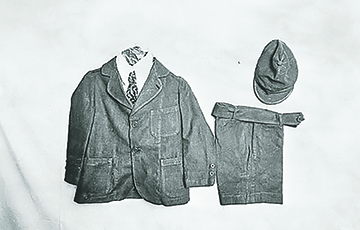Mickey Starling
reporter3@greenepublishing.com
By the mid-1800s, the advance of the sewing machine brought a more economical method of shipping in North America that replaced the barrel. Cloth sacks were not only less expensive, they allowed for shipping in greater quantities because they took up less room. It became a common practice for the sacks to be turned into towels, diapers and rags. By the turn of the century, farm women were turning flour sacks or feed sacks into shirts and dresses throughout the US.
In the early 20th century, the recycling of flour sacks into clothing had become so popular that it got the attention of Asa T. Bales, a millworker from Missouri. In 1924, he filed for a patent to make cloth sacks that were suitable for dress goods after the product was removed. The patent was given to the George P. Plant Milling Company, which quickly set about manufacturing Gingham Girl sacks.
Gingham Girl sacks were originally printed in a red and white checkered pattern that was a huge success. The sacks were sold as feed and flour sacks that made for a fashion hit on the farm. By the end of the decade, several other milling companies were selling cloth sacks. Before long, the bags were marked with sizes so that farm women could more easily determine the amount of fabric needed for making shirts and dresses. Locally, Joyce Barnes recalls that her mother often made dresses for all of her daughters from 25 lb flour sacks that she saved up. "My mother did such a good job making dresses that they looked like they came from the store," said Barnes.
Feed store owners took notice that shoppers were now selecting flour and feed on the basis of colors and patterns on the bags. A recent article in Slate Magazine uncovered an interesting quote from a disgruntled store owner: "Years ago, they used to ask for all sorts of feeds. Now they come over and ask me if I have an egg mash in a flowered percale. It ain't natural."
Natural or not, the trend of hot-selling colorful feed and seed bags continued into the early years of World War II, when cotton began to be rationed so that military uniforms could be produced for soldiers. However, Gingham Girl bags and dresses are still available online.

